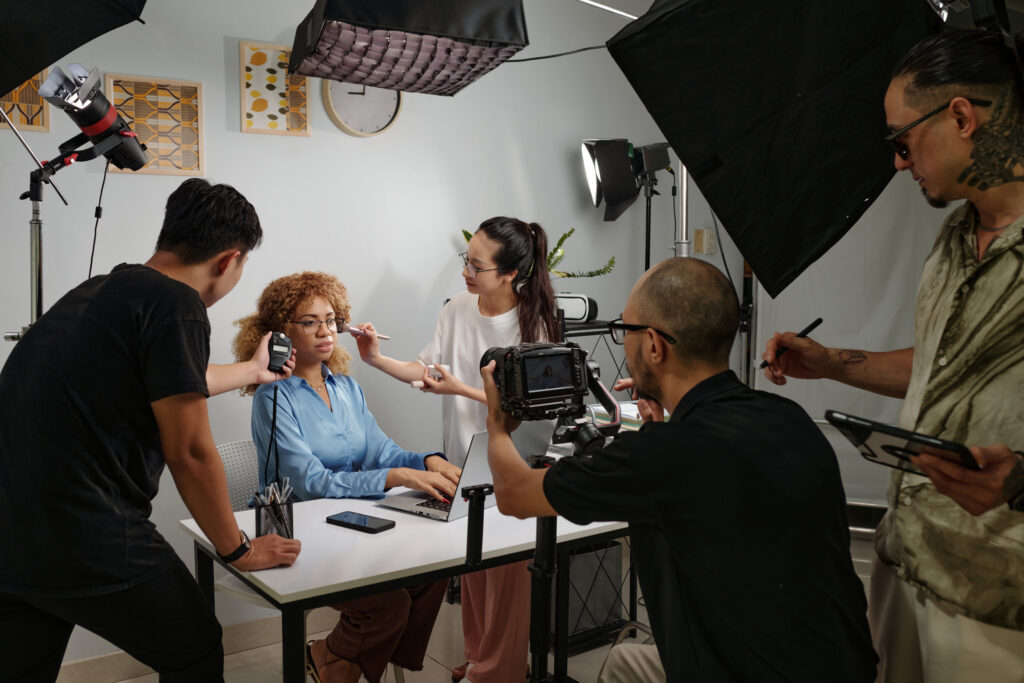Understanding and Respecting Copyright: A Guide for SMACC Members
In the digital age, copyright is one of the most important concepts content creators need to understand. Whether you’re posting videos, photos, music, or written content, knowing how copyright works is crucial to protecting your own work and respecting the rights of others. Missteps in this area can lead to legal trouble, loss of revenue, and damage to your reputation as a creator. For SMACC members, understanding copyright is not just about avoiding problems, but also about leveraging your own content to your advantage.
In this blog, we’ll explore the basics of copyright, how to use copyright-free resources, and how to protect your own work. We’ll also discuss common pitfalls that come with breaching copyright laws and give practical tips on navigating this complex but essential topic.
1. What Is Copyright?
Copyright is a legal protection granted to creators of original works, such as videos, images, music, and written content. It gives the creator exclusive rights to use, distribute, and profit from their work. In most cases, as soon as you create something original and it is in a fixed form (like a video, photo, or text), it is automatically protected by copyright, even without registering it.
Key rights copyright holders have:
- Reproduction: The right to copy the work.
- Distribution: The right to sell or distribute copies.
- Derivative Works: The right to make new content based on the original (e.g., turning a book into a movie).
- Public Display: The right to display the work publicly.
What’s protected by copyright?
- Original videos, photos, and music.
- Blog posts, social media captions, and written works.
- Graphics, logos, and illustrations.
What’s not protected?
- Facts or ideas.
- Titles, names, or slogans (these may be protected by trademark law).
- Public domain works (discussed later).
Tip: Always assume that content you find online is protected by copyright unless clearly stated otherwise.
2. Respecting Other People’s Copyright
One of the quickest ways to get into legal trouble as a content creator is by using someone else’s copyrighted material without permission. Even using a few seconds of a song or an image found through Google search can result in copyright claims, takedowns, and even lawsuits.
Here are the key things to remember when using others’ content:
Fair Use vs. Copyright Infringement
- Fair Use: In some cases, you can use copyrighted material without permission if your use falls under “fair use.” Common examples include criticism, commentary, news reporting, education, and parody. However, “fair use” is a complex and risky defense and doesn’t guarantee you’ll avoid legal action.
- Copyright Infringement: Using someone else’s copyrighted content without permission and without it being considered fair use. This can result in strikes on platforms like YouTube, fines, or legal action.
Tip: Always credit the original creator, but remember that crediting alone does not replace the need for permission.
3. Using Copyright-Free Resources
Luckily, there are many copyright-free resources available for creators who want to avoid infringing on others’ rights. These include royalty-free images, music, and videos that you can legally use in your content.
Copyright-Free Resources:
- Public Domain: Works in the public domain are no longer protected by copyright, meaning you can use them freely. Examples include old books, classical music, and historical photos. Check reliable sources like Project Gutenberg for texts, or Wikimedia Commons for images.
- Creative Commons: Content creators often use a Creative Commons license to let others know how their work can be used. Different types of Creative Commons licenses allow for various levels of use, from free use without attribution to more restrictive licenses that require permission or prevent commercial use. Platforms like Flickr, Pixabay, and Free Music Archive offer Creative Commons resources.
- Royalty-Free: These resources allow you to pay a one-time fee (or sometimes no fee at all) to use images, music, or videos in your content. Sites like Shutterstock, Envato Elements, and Artlist offer a vast range of royalty-free resources.
Tip: Always double-check the license attached to any content you use, even on royalty-free or Creative Commons platforms. Some licenses may restrict how you can use the material, especially in commercial projects.
4. What You Own as a Content Creator
As a content creator, you automatically own the copyright to any original work you create. This includes:
- Your videos.
- Your original photos and images.
- Your blog posts or social media captions.
- Any original music or sound you produce.
What Can You Do with Your Copyright?
- License Your Work: You can license your content for others to use, either for free or for a fee. For example, many photographers and musicians sell licenses for others to use their work in videos or ads.
- Sell Your Work: If you want to sell the rights to your content (for example, selling a video to a company for exclusive use), you can negotiate the terms and payment.
- Protect Your Content: If someone uses your work without permission, you have the right to issue a takedown notice or pursue legal action.
Tip: Keep records of your original work and publish dates to help prove ownership in case of disputes. Tools like watermarks, metadata, and content registration services can also help protect your content.
5. Pitfalls of Breaching Copyright Rules
While copyright might seem like a complicated issue, failing to respect it can have serious consequences for creators. Here are some of the most common pitfalls:
a. Takedown Notices and Content Strikes
Platforms like YouTube, Instagram, and Facebook are quick to respond to copyright violations. You could receive takedown notices or even have your account suspended after multiple strikes. This could cause you to lose followers, revenue, and even your channel.
b. Legal Consequences
Copyright infringement can lead to lawsuits, with fines reaching into the thousands (or more) depending on the severity of the case. Some creators have been sued for using unlicensed music in videos, which can be a costly mistake.
c. Damage to Reputation
Even if you avoid legal issues, being known as a creator who “steals” content can harm your reputation within the creator community. Brands may be less likely to work with you if they see you’ve had copyright disputes.
Tip: If you’re ever in doubt about whether you can use a piece of content, seek permission from the creator or avoid using it altogether.
6. Leveraging Your Own Copyright to Your Advantage
Now that you know how to protect others’ rights, it’s important to recognize how copyright can work to your benefit.
- Monetizing Your Content: By owning the copyright to your content, you control how it’s used. This allows you to sell licenses, offer exclusive deals, or monetize your videos through ad revenue, sponsorships, and other means.
- Protecting Your Work: If someone uses your content without permission, you can take legal action or issue a takedown notice on platforms like YouTube or Instagram. Tools like YouTube’s Content ID system automatically flag videos that use your copyrighted material, helping you keep control of your work.
Tip: Registering your copyright with your country’s copyright office can give you extra protection and make it easier to take legal action if needed.
Conclusion: Copyright as Both Shield and Sword
Copyright can feel overwhelming, but once you understand its fundamentals, it becomes a tool you can use to your advantage. Whether it’s respecting other creators’ work or protecting your own, copyright is essential for building a successful and sustainable career as a content creator.
For SMACC members, navigating copyright is a must. By using copyright-free resources, knowing your rights, and leveraging your own content, you’ll be well on your way to growing your brand while avoiding the common legal pitfalls that can come with content creation.
Respect the work of others, protect your own, and create with confidence!


